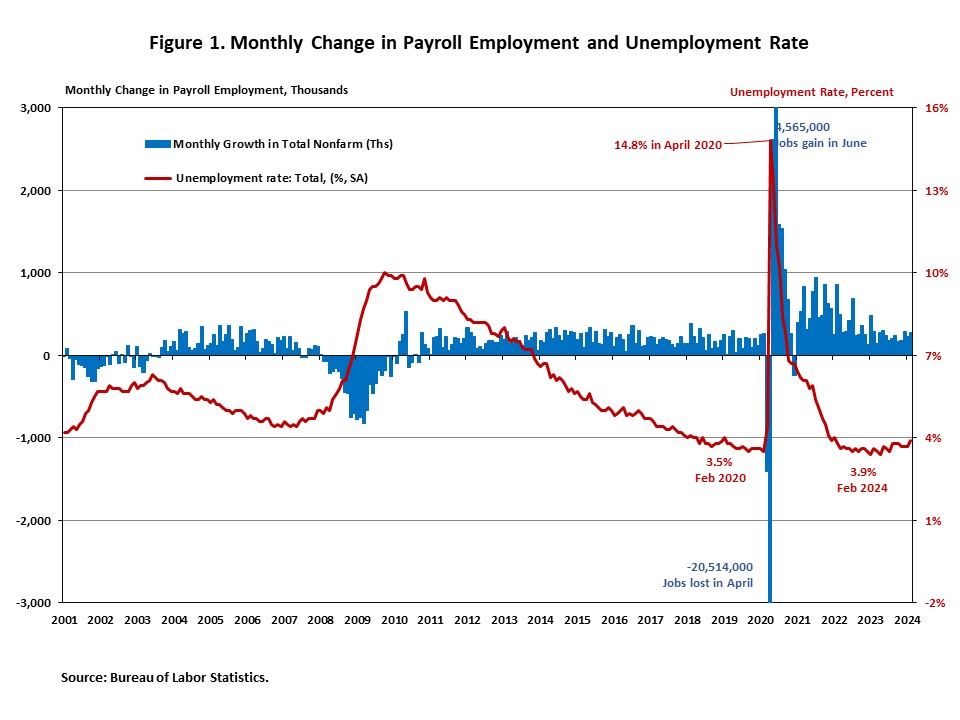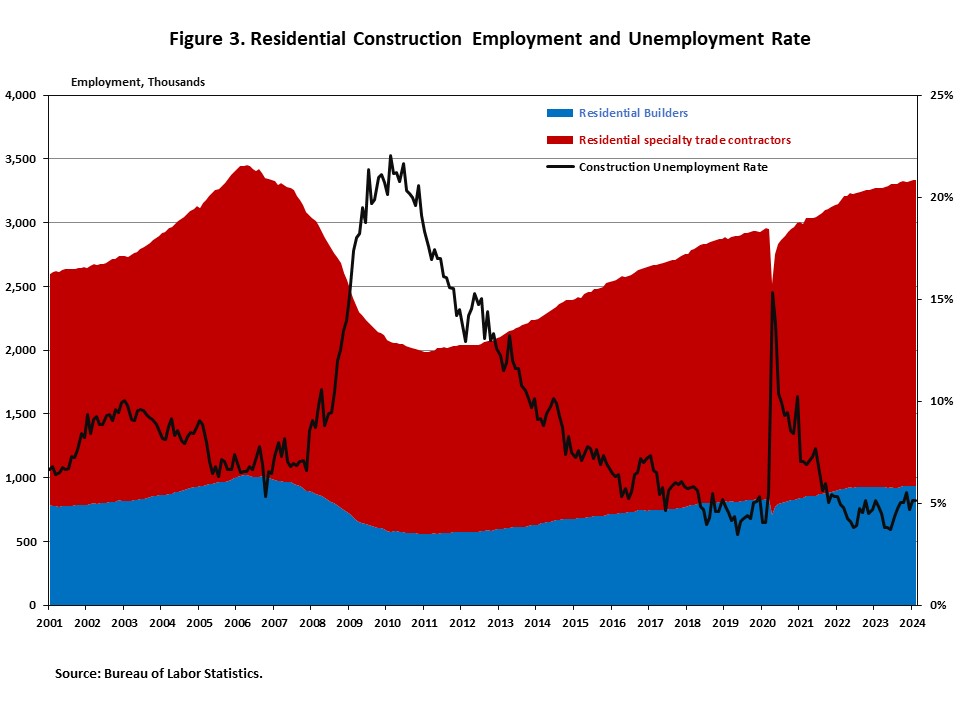In February, job gains continued despite elevated interest rates. The unemployment rate increased while the labor force participation rate held steady. February’s jobs report shows that the labor market remains resilient but shows signs of slowing.
Additionally, wage growth slowed slightly in February. On a year-over-year basis (YOY), wages grew 4.3% in February, following a 4.4% increase in January. This is 0.5 percentage points lower than a year ago. Wage growth is positive if matched by productivity growth. If not, it can be a sign of lingering inflation.

Total nonfarm payroll employment increased by 275,000 in February, greater than the downwardly revised increase of 229,000 jobs in January, as reported in the Employment Situation Summary. There were significant downward revisions to the initial reported job gains for December and January. The monthly change in total nonfarm payroll employment for December was revised down by 43,000, from +333,000 to +290,000, while the change for January was revised down by 124,000 from +353,000 to +229,000. Combined, the revisions were 167,000 lower than the original estimates. Despite restrictive monetary policy, about 6.9 million jobs have been created since March 2022, when the Fed enacted the first interest rate hike of this cycle.
In February, the unemployment rate increased by 0.2 percentage points to 3.9%, after holding at 3.7% for three straight months. This marks the highest level since January 2022. The number of unemployed persons rose by 334,000 to 6.5 million, while the number of employed persons declined by 184,000.
Meanwhile, the labor force participation rate, the proportion of the population either looking for a job or already holding a job, was unchanged at 62.5% for the third consecutive month. Moreover, the labor force participation rate for people aged between 25 and 54 rose 0.2 percentage points to 83.5%. While the overall labor force participation rate is still below its pre-pandemic levels at the beginning of 2020, the rate for people aged between 25 and 54 exceeds the pre-pandemic level of 83.1%.

For industry sectors, employment in health care (+67,000), government (+52,000), food services and drinking places (+42,000), social assistance (+24,000), and transportation and warehousing (+20,000) increased.
Employment in the overall construction sector increased by 23,000 in February, following an upwardly revised 19,000 gains in January. While residential construction lost 1,200 jobs, non-residential construction employment added 24,200 jobs for the month.
Residential construction employment now stands at 3.3 million in February, broken down as 936,000 builders and 2.4 million residential specialty trade contractors. The 6-month moving average of job gains for residential construction was 4,433 a month. Over the last 12 months, home builders and remodelers added 56,800 jobs on a net basis. Since the low point following the Great Recession, residential construction has gained 1,348,500 positions.
In February, the unemployment rate for construction workers was unchanged at 5.1% on a seasonally adjusted basis. The unemployment rate for construction workers remained at a relatively lower level, after reaching 14.2% in April 2020, due to the housing demand impact of the COVID-19 pandemic.


